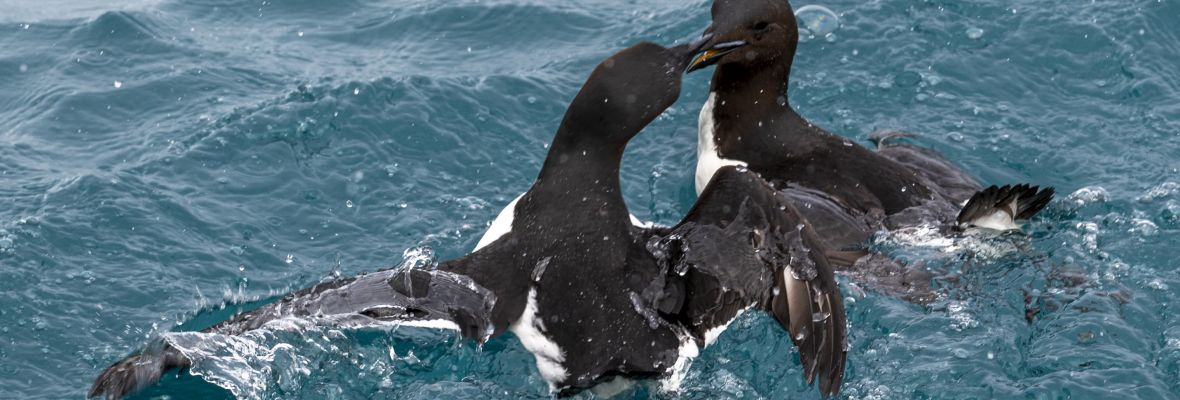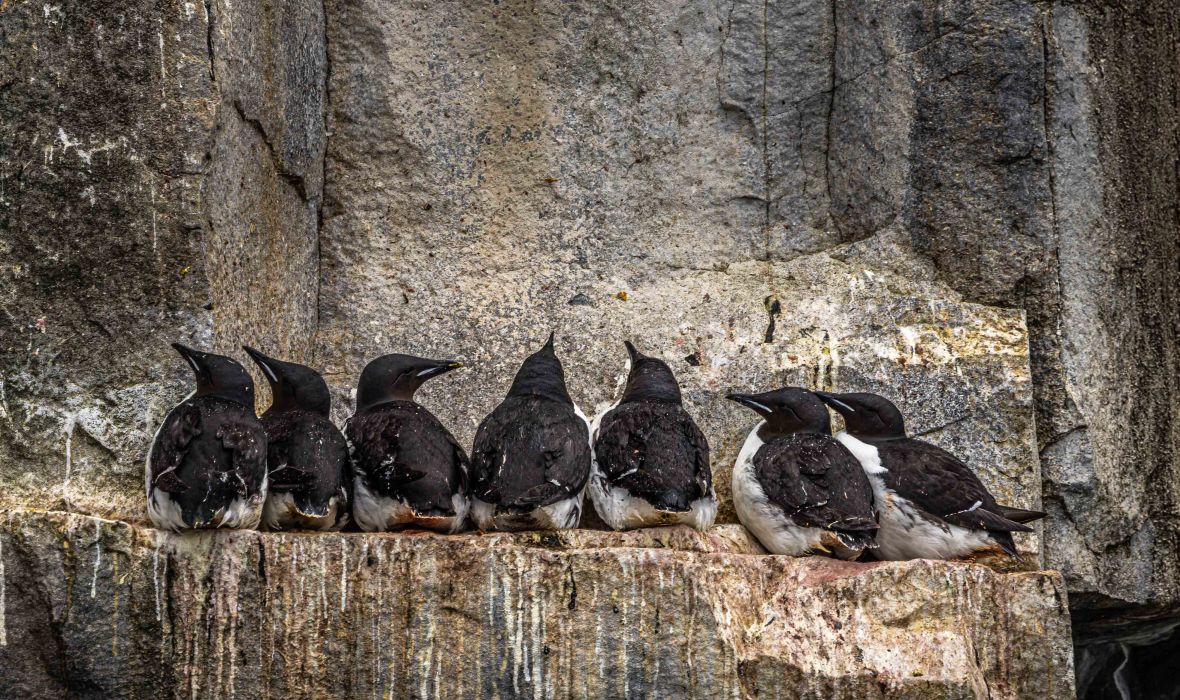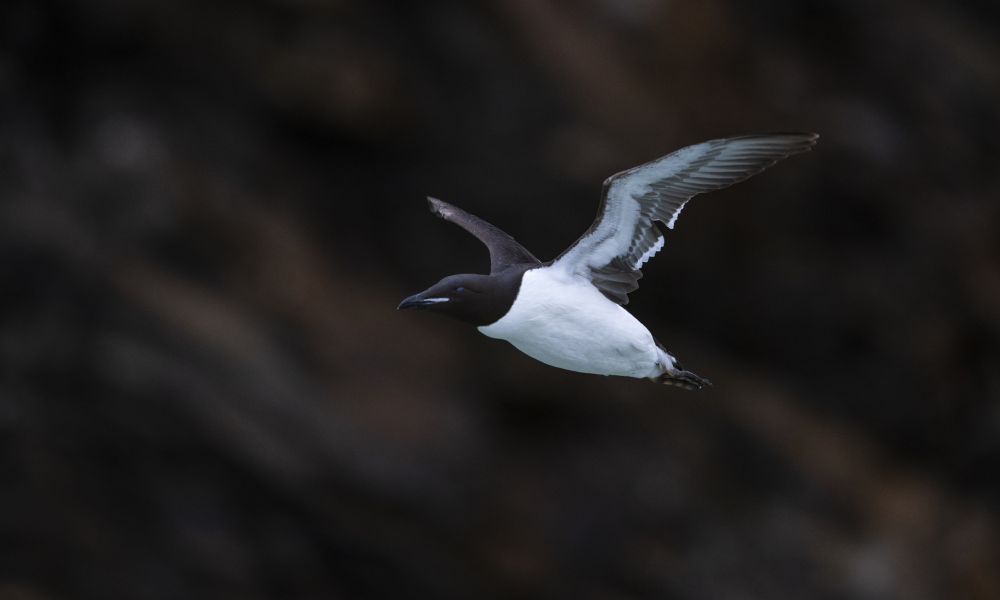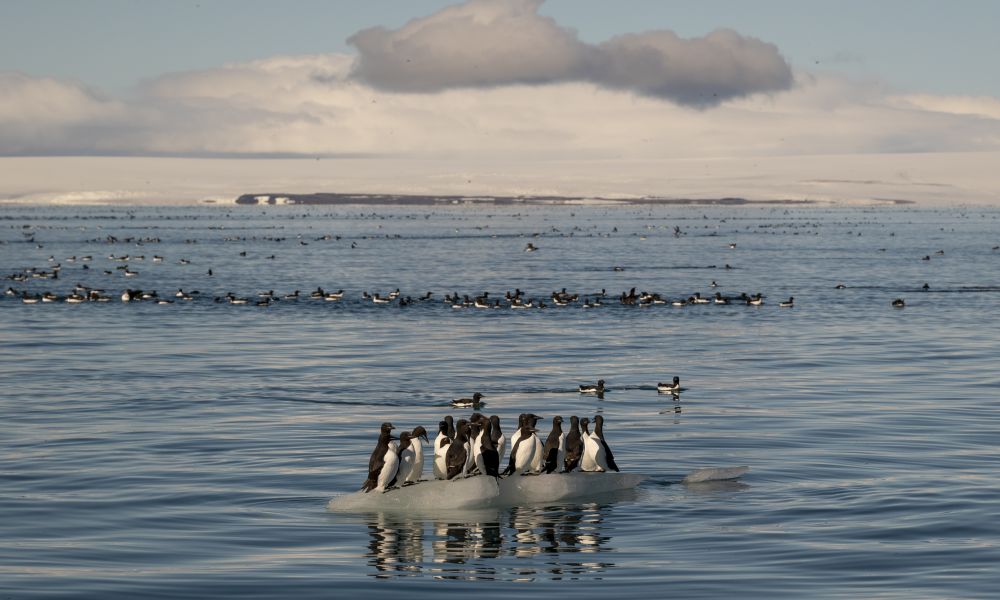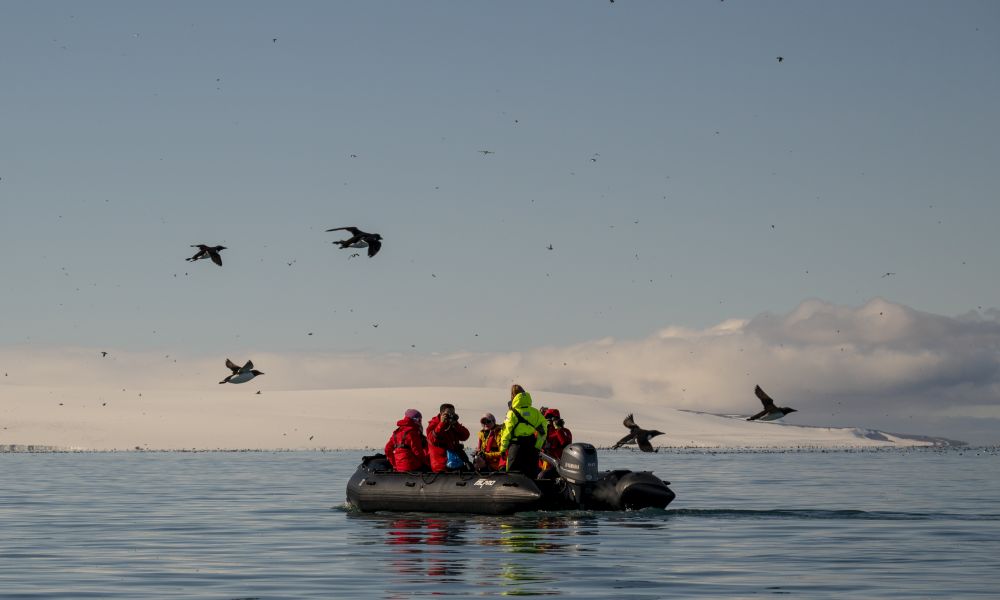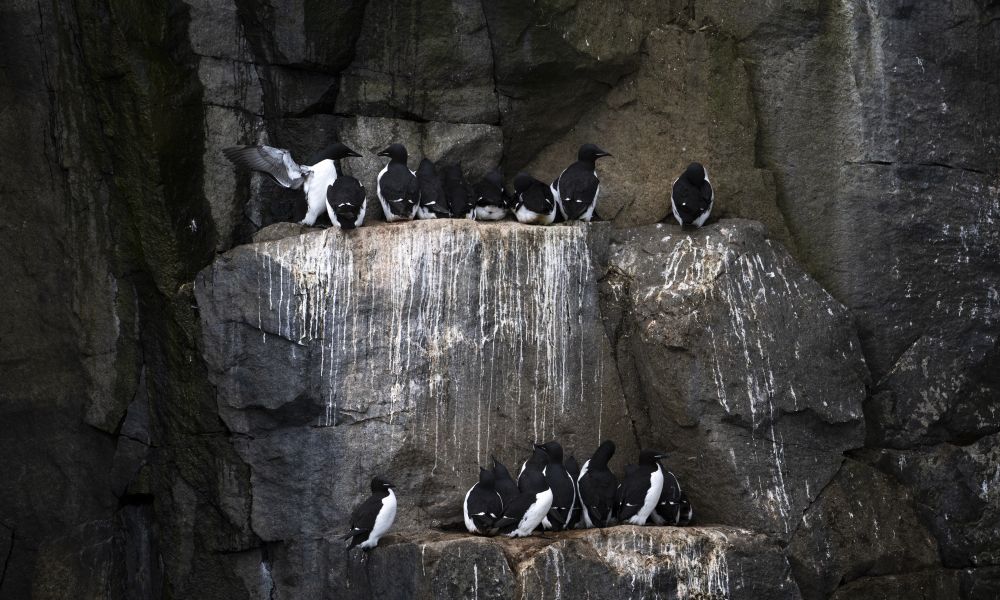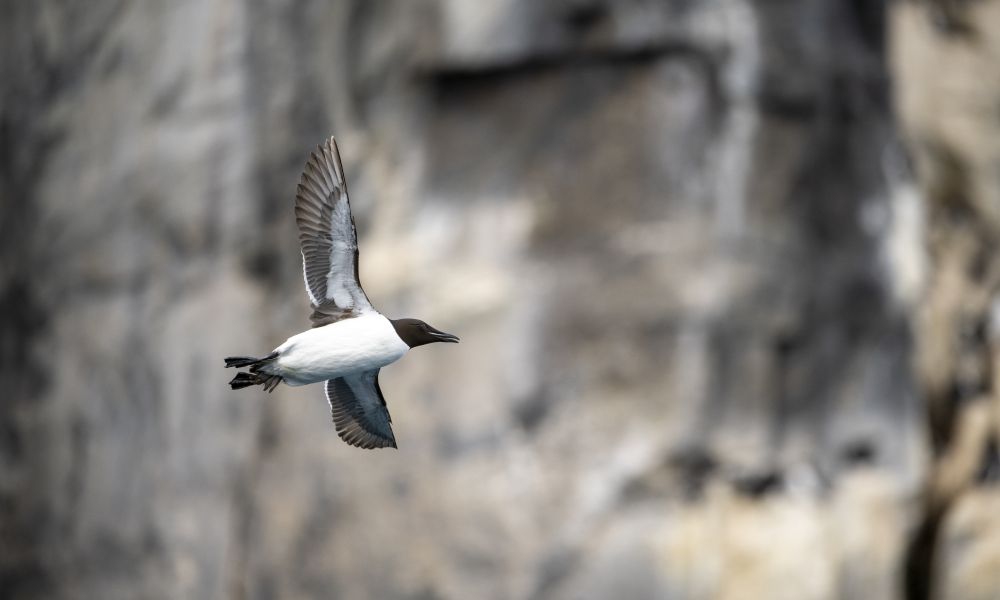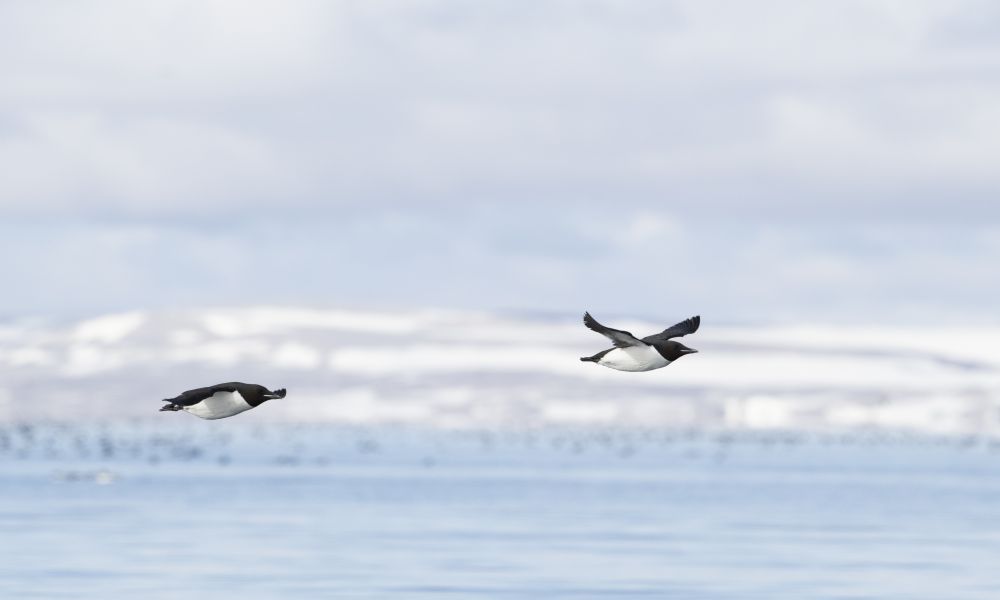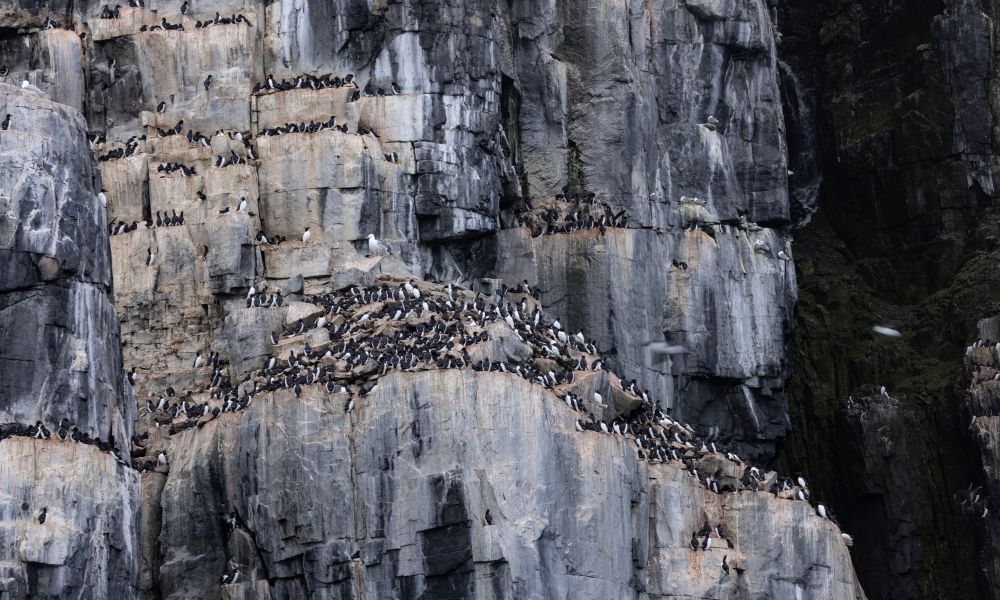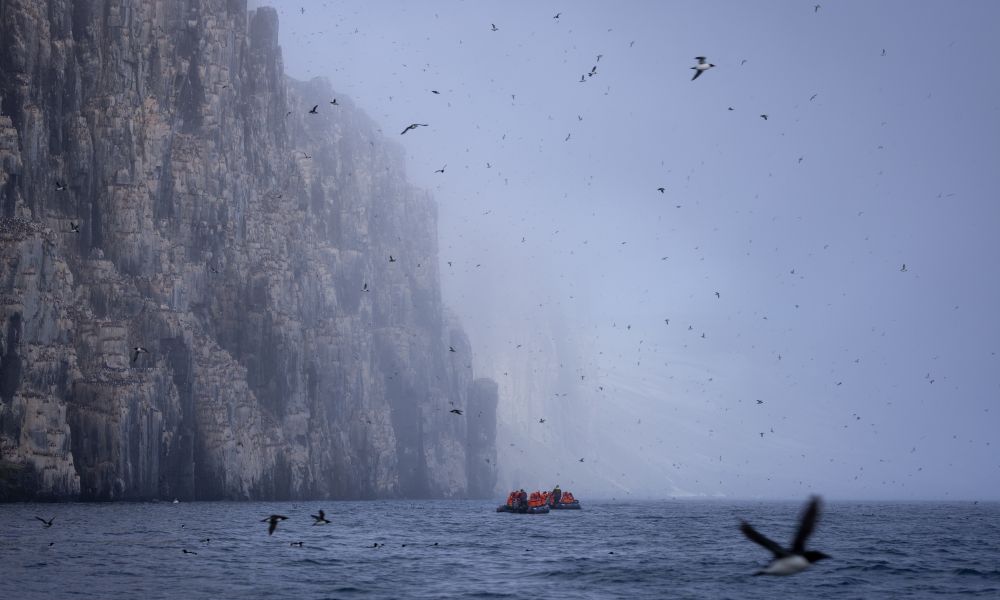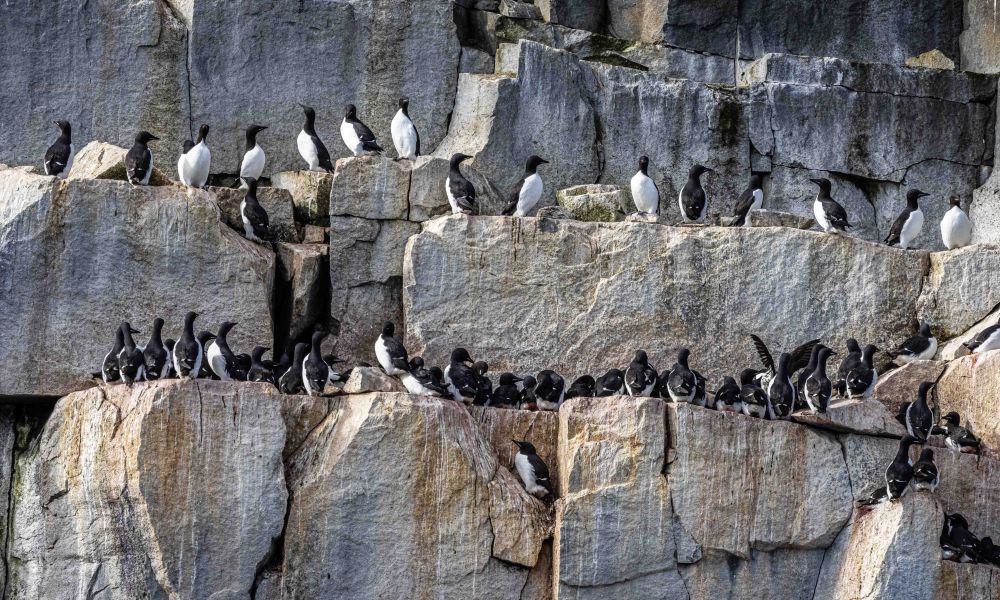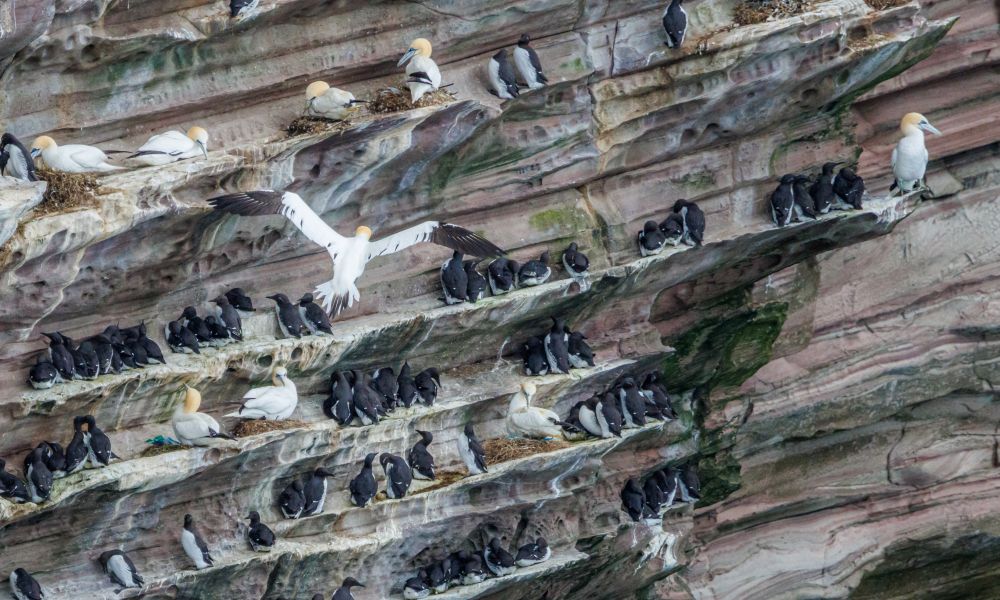Brünnich’s Guillemot Fact #1:
Thick-billed murre dive can reach over 200 meters deep into the water.
Brünnich’s Guillemot Fact #2:
The thick-billed murre is like a charming little penguin, but what's really special is that it can actually fly!
Brünnich’s Guillemot Fact #3:
The rocky Arctic cliffs are the ideal thick-billed murre habitat.
Brünnich’s Guillemot Fact #4:
The thick-billed murre range stretches across the entire Arctic Circle.
Brünnich’s Guillemot Fact #5:
A thick-billed murre egg is pear-shaped to keep it from rolling off cliffs.
Brünnich’s Guillemot Fact #6:
Thick-billed murres breed in midsummer and lay a single large egg.
Brünnich’s Guillemot Fact #7:
They can remain submerged for 4 minutes during a single dive.
Brünnich’s Guillemot Fact #8:
According to IUCN, the conservation status of the thick-billed murre is of low concern.
Brünnich’s Guillemot Fact #9:
Brünnich’s Guillemots can also be distinguished from the Common Guillemot by their smaller size.
Brünnich’s Guillemot Fact #10:
It is among the most numerous seabirds in the northern hemisphere.
Join on an Arctic adventure with Albatros Expeditions and witness the wonders of Arctic wildlife!



